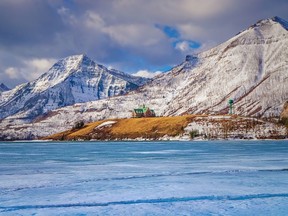New snowshoe tour lets visitors marvel at meteor showers in Alberta’s world-renowned dark sky preserve
Reviews and recommendations are unbiased and products are independently selected. Postmedia may earn an affiliate commission from purchases made through links on this page.
Article content
There’s something magical about gazing up at a dark sky filled with twinkling stars. As my husband and I looked up at the constellations from a snowy trail near Linnet Lake on a dark sky tour in Alberta’s Waterton Lakes National Park, we saw a meteor blaze across the sky and watched as it split in two before it disappeared below the horizon. I instinctively made a wish, but looking back on it now, I wonder if the universe owed me two wishes instead of one.
Advertisement 2
Article content
The tradition of wishing on a shooting star goes back to ancient Greece where it was believed that shooting stars happened when the Gods opened a portal between heaven and earth. But my introduction to the idea of wishing upon a star came from the 1940 Walt Disney animated film, Pinocchio. Jiminy Cricket’s stirring song, “When You Wish Upon a Star” was the first Disney song to win an Academy Award, but more importantly, it promised that anything was possible if you wished on a shooting star, a belief that I’m still holding onto.
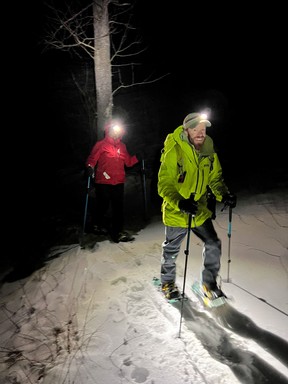
As our planet becomes more populated, fewer places remain untouched by light pollution and it is becoming more difficult to see the stars. Earlier this year, Waterton-Glacier International Peace Park was named the best place in the world for stargazing by U.K. travel company Inghams — topping the list of 122 other locations on the planet.
Article content
Advertisement 3
Article content
In 2017, Waterton Lakes National Park in Canada and Glacier National Park in the United States were officially recognized as an International Dark Sky Park by the International Dark-Sky Association. It was the world’s first transborder International Dark Sky Park, a recognition of the joint commitment of the parks in protecting and preserving high-quality stargazing conditions.
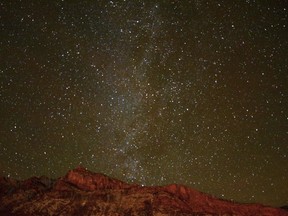
It was bitterly cold when we set out for Waterton, but well above freezing temperatures when we arrived in the park in early December. Unlike other mountain parks, Waterton Lakes National Park is less travelled in winter. When we visited, there were very few travellers inside the park, and we had this peaceful winter wonderland almost entirely to ourselves.
Advertisement 4
Article content
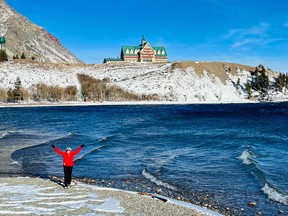
We settled into our cosy room at the Kilmorey Lodge and enjoyed a delicious dinner and a comfortable sleep. The next day we were up exploring the park. Waterton is very quiet in winter, but that’s one of the things I like about it. When we were there, just a few hotels were open and only two restaurants. We drove around the townsite stopping to walk along the shores of the beautiful lake and to gaze at the snow-covered mountains from the Parks Canada red chairs. Cameron Falls is beautiful in every season, but I love seeing it in winter when ice formations look like glistening works of art reflecting in the sun.
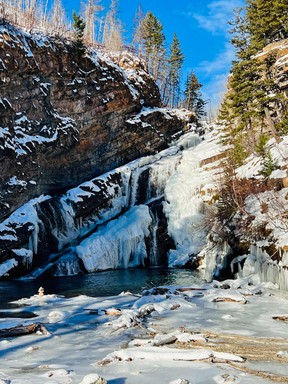
We saw a few mule deer in the snow-covered campground in the townsite, but the best wildlife viewing was along the Akamina Parkway, the winding mountain road that leads to Cameron Lake. In winter, the roadway is blocked off near the top of the Cameron Valley and you must hike, snowshoe or cross-country ski the last few kilometres to the lake. On the drive up, we saw a ruffed grouse near some bushes, watched a long-tailed weasel dart across the road, saw several mule deer at the edge of the forest and a pair of bighorn sheep licking salt off the road.
Advertisement 5
Article content
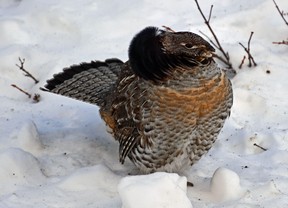
Stargazing was the focus of our visit to Waterton and we geared up for an evening stargazing tour with a visit to Waterton’s Indoor Dome Planetarium, open year-round and located in the Falls Interpretive Theatre. It provides 360-degree views of the night sky from the comfort of a warm indoor facility. In the planetarium, we watched a show about the aurora borealis.
After a delicious dinner at the Kilmorey Pub restaurant, we headed out on the new Snowshoe Adventure Tour with Keith Robinson of Dark Sky Guides. He geared us up with snowshoes and headlamps and we set out on a snowy trail near Linnet Lake, not far from the Waterton townsite.

“After the Dark Sky Designation in 2017, my brother and I figured it was the opportune time to start a business focused on the beauty of Waterton’s dark night skies,” Robinson explained. “It was something different and new. Since then, the interest and excitement for exploring the night sky has increased dramatically.”
Advertisement 6
Article content
We followed Keith along the snow-covered trail, stopping in several places where he pointed out constellations and explained other aspects of the stunning night sky. Our visit was timed perfectly with a new moon, which offers darker skies and better views of the Milky Way which glowed above us. It was also timed during the annual Geminids meteor shower. Seeing a shooting star in the beautiful dark skies of Waterton Lakes National Park was a rare privilege and one that I’ll never forget. I’m still hoping my wish will come true.
Debbie Olsen is an award-winning Métis writer and a national bestselling author. Follow her adventures at wanderwoman.ca.
Article content

